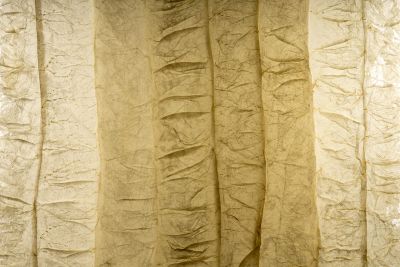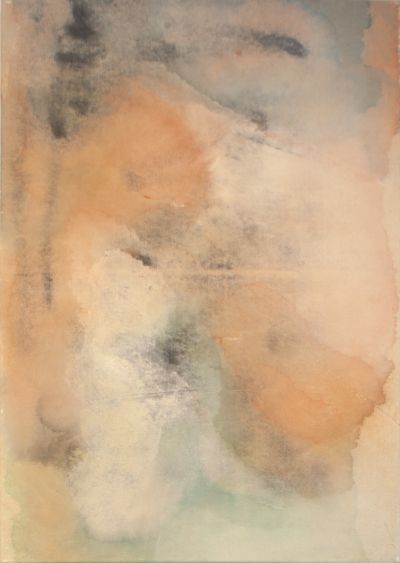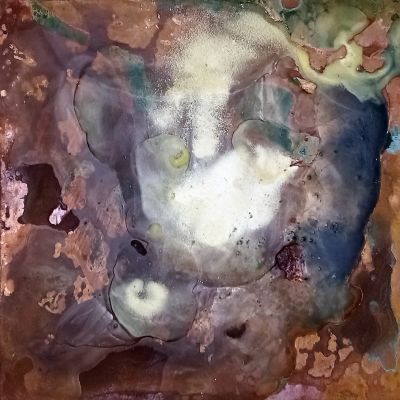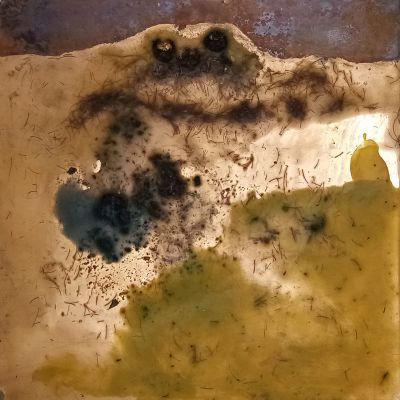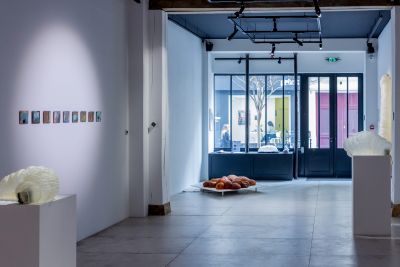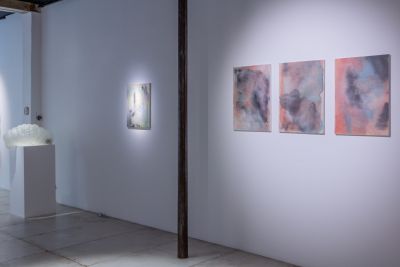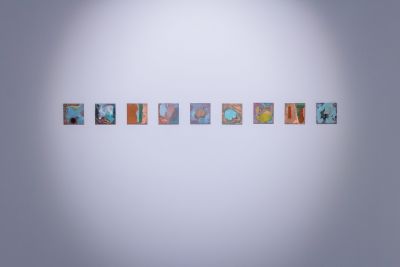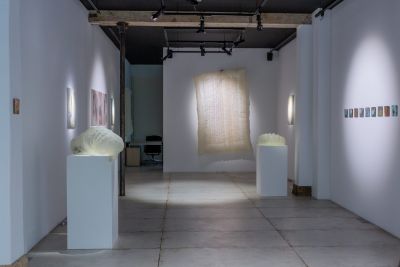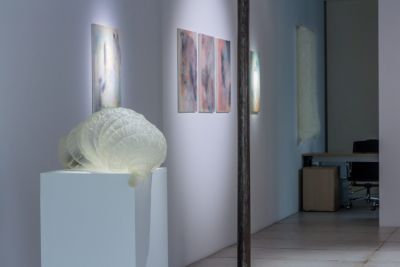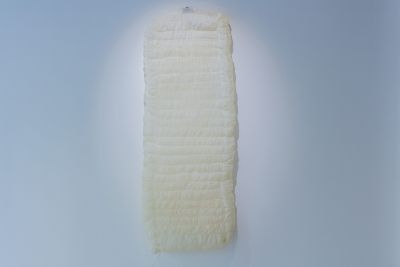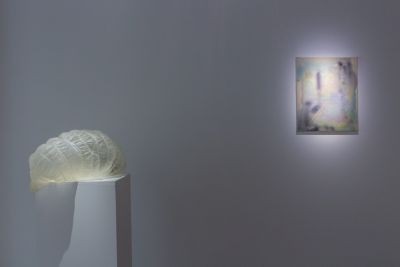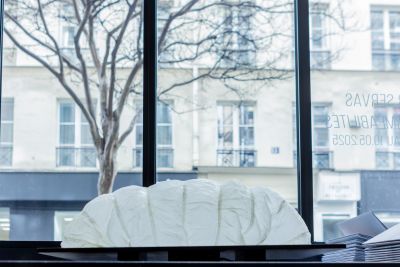Neither human form nor animal anatomy, this object evokes the appearance of certain insects before they hatch. The pupa is its name. In the life of a dipteran insect, the pupa is the second stage of the nymph, the end of its larval period. The eye gazes innocently at this translucent pouch and is suddenly captivated as it breathes. Is it alive, vulnerable? Will it hatch or remain forever asleep? What dream stirs its depths?
Before any commentary, Xavier Servas's works are there to ask a question. They blur the divide between the animate and the inanimate, the robust and the fragile, the artisanal and the technological.
The membrane of the “pupe” is made of pig intestine. Its movement comes from an internal fan programmed to simulate the rhythm of breathing. Xavier Servas draws a discreet but persistent power of enchantment from a material that has no apparent artistic purpose.
With Le Troupeau, the pneumatic effect gains in complexity. Each of the pockets - this time made up of ox bladders - is animated by its own respiratory rhythm. Their coexistence is skilfully programmed: to avoid any mechanical effect, the fan coding includes a random component. An electric wire is left in the open to capture magnetic interference. It's as if a few cubic millimeters of air, waves and dust were invading the device. For Xavier Servas, technology is made to be derailed: “3D,” he says, “brings the possibility of accident. It allows randomness to be channeled.
For Xavier Servas, this inspiration goes back to his childhood. His father, a first-generation computer scientist, died the year he was born. He left behind a mysterious jumble of soldering irons, cables, screens and electronic components. This mix of craftsmanship and cutting-edge technology now accompanies the artist's life. For his last year at the Arts Décoratifs, he presented inflatable installations. This category of objects fascinates him: bubbles that can be placed in the middle of nowhere, they symbolize the comfort of the “Trente glorieuses”. They are magnified in design works such as Quasar Khanh's. In a singular twist, Xavier Servas succeeds in making them express a fragility, a softness that is vulgar and unnatural.
With Holidays, for example, he created a kind of vertical mattress reminiscent of Inuit parkas, made from the intestines of marine animals. Here again, the material gives him directions and speaks to his imagination. Holidays was assembled at the onset of his mother's Alzheimer's disease. This envelope, which empties and re-sews itself, echoes human fragility. Xavier Servas receives this echo only in retrospect. “Today, it jumps out at me,” he says. What the object suggests in depth takes time to reveal itself.
This work is the opposite of an ivory tower. The quality of attention is paramount. It's a patient vigil, a wait that encounters and discoveries gradually fill.
With the watercolors in the Gaz series, it's a case of questioning the material, making it speak. And here again, an unforeseen prodigy emerges from an accident of fate.
Between 2011 and 2013, Xavier Servas worked for an industrial design company in Vietnam. He returns to France with a small shipment of dzó paper, a rare paper that was once used in the archives of the imperial palace. What to make of this dzó paper? “I kept it for a long time without knowing what to do with it. Little by little, he found out: on this porous paper, the ink produces stains that complicate the painting process. But this defect turned into a godsend. Working with airbrush on both sides, watercolor, Indian ink and pigment, the artist plays with these expanding colors. The result is a call for figurative interpretation: steam, clouds, silhouettes, cartography, reliefs seen from the air, flesh-toned seabeds.
On the copper plates in the Sédiments series, the material is still evolving, but in a different way. Oxidized, partially coated with beeswax and pigments, the metal doesn't breathe, like Pupe's membrane, but dreams. Oxidation continues over time. Colors crystallize in a way that is both directed and unplanned. Nothing is designed rigidly, a priori. The change of state of matter is prior to the creator's thought. In an inversion of technical logic, matter moves, technique follows, and art springs forth. Far from a claim to omnipotence, it's a lesson in attentiveness, humility perhaps. A way of letting the world breathe before intervening.
- Philippe Garnier, writter
